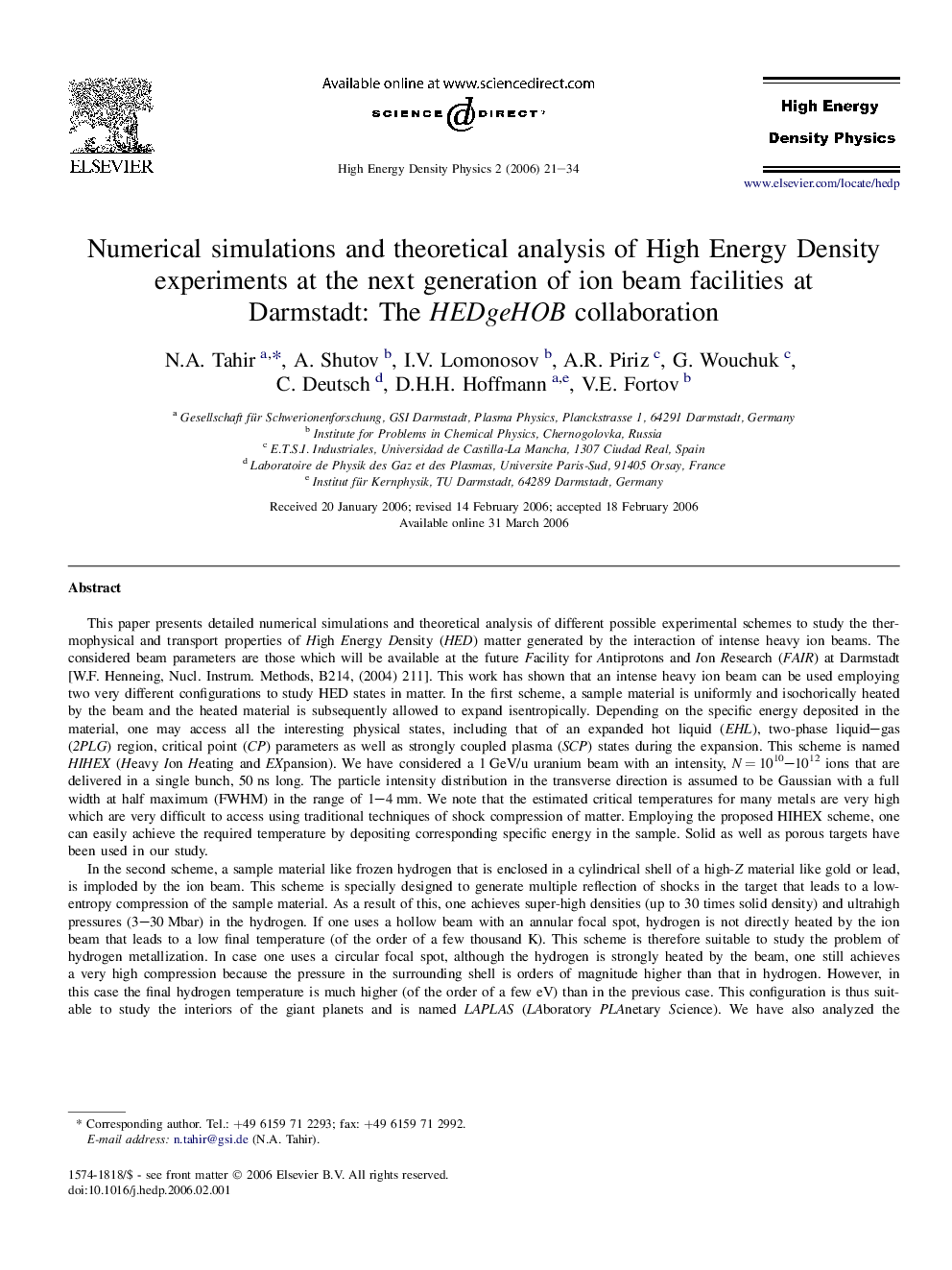| Article ID | Journal | Published Year | Pages | File Type |
|---|---|---|---|---|
| 1772898 | High Energy Density Physics | 2006 | 14 Pages |
Abstract
In the second scheme, a sample material like frozen hydrogen that is enclosed in a cylindrical shell of a high-Z material like gold or lead, is imploded by the ion beam. This scheme is specially designed to generate multiple reflection of shocks in the target that leads to a low-entropy compression of the sample material. As a result of this, one achieves super-high densities (up to 30 times solid density) and ultrahigh pressures (3-30Â Mbar) in the hydrogen. If one uses a hollow beam with an annular focal spot, hydrogen is not directly heated by the ion beam that leads to a low final temperature (of the order of a few thousand K). This scheme is therefore suitable to study the problem of hydrogen metallization. In case one uses a circular focal spot, although the hydrogen is strongly heated by the beam, one still achieves a very high compression because the pressure in the surrounding shell is orders of magnitude higher than that in hydrogen. However, in this case the final hydrogen temperature is much higher (of the order of a few eV) than in the previous case. This configuration is thus suitable to study the interiors of the giant planets and is named LAPLAS (LAboratory PLAnetary Science). We have also analyzed the hydrodynamic stability of the LAPLAS target and we find that the Rayleigh-Taylor (RT) and Richtmeyer-Meshkov (RM) instabilities will not pose any serious problems to this scheme.
Keywords
Related Topics
Physical Sciences and Engineering
Physics and Astronomy
Astronomy and Astrophysics
Authors
N.A. Tahir, A. Shutov, I.V. Lomonosov, A.R. Piriz, G. Wouchuk, C. Deutsch, D.H.H. Hoffmann, V.E. Fortov,
